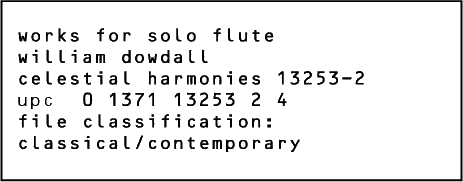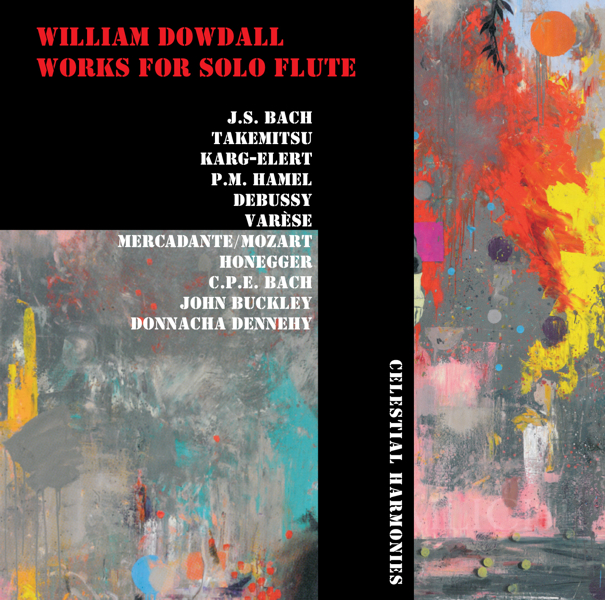


the project
The origins of the modern concert flute lie in the mists of time as the plain cylindrical bamboo instrument of India and the Far East. Through travel and trade, it made its European appearance round about the tenth century CE and it was this instrument that became the Renaissance flute, commonly made from maple or boxwood rather than the original bamboo. During the Baroque period the flute underwent a number of changes, assuming a more conical bore and the addition of a single key; the earliest of these instruments being dated to the 1670s in Paris.
The major technical developments of the flute undertaken by Theobald Böhm in the first half of the nineteenth century led to the modern instrument. Böhm reverted to the cylindrical bore, adding an elaborate mechanism of keys, rods, springs and levers, making the flute entirely chromatic and transforming it into the versatile instrument we recognise today.
The flute is regarded as one of the most adaptable of wind instruments and fulfills a major role in the orchestral repertoire. As a chamber and solo instrument it draws its finest repertoire from two eras, the Baroque and the contemporary period beginning with Debussy. The Baroque has the great works of Johann Sebastian Bach and his sons as well as Händel, Telemann, Quantz and Vivaldi amongst others. In this period, the flute was on a par with the violin, and this is reflected by the quality of the repertoire.
Flute music by nineteenth century composers often focused on technical virtuosity, sometimes to the detriment of the musical expression and for this reason has not held its place in the general repertoire. However, a work such as Mercadante's Variations on a theme by Mozart, Là ci darem la mano, displays the extraordinary mellifluous fluency of the instrument.
The emergence of the metal flute and its adoption by the French Impressionists led to its revival as a solo instrument. Debussy's Syrinx led the way towards a resurgence of new repertoire, further enhanced by strikingly original works by composers such as Varèse, Honegger, and Takemitsu. This recording also includes specially composed works for William Dowdall by contemporary composers Hamel, Dennehy and Buckley.
While the modern flute is essentially the instrument as developed by Böhm, recent innovations include the Glissando Head-joint® invented by the American flautist Robert Dick. This new device revolutionises the manner in which the flute can glide between pitches. It is operated by placing two prongs on the player's jaw, allowing the head-joint to slide freely over a range of a third. Its new technical resources can be heard in Sea Echoes by John Buckley.
The music on this recording is a voyage of discovery across the repertoire
of the solo flute from the masterpieces of the Baroque to the explorations
of our own time. The performances by William Dowdall, Ireland's leading
exponent of the classical flute, capture every nuance of the music.
His
interpretations are characterized by dazzling technical brilliance
allied to a profound musical understanding, resulting in a landmark
recording for the solo flute.
William Dowdall can also be heard on In Winter Light: Music for Guitar and Flute by John Buckley (Celestial Harmonies 13244-2)
the artist
William Dowdall, born in Dublin in 1951, one of Ireland's leading musicians, combines a busy career as a soloist, chamber musician, and teacher.
He studied in Cleveland, Ohio, where his teachers included Maurice Sharp of the Cleveland Orchestra, and his interest in new music was sparked by Donald Erb, composer in residence at the Cleveland Institute of Music. On returning to Ireland at the age of 21 he was appointed principal flute of the RTÉ Concert Orchestra. From 1979 to 2004 he was principal flute of the RTÉ National Symphony Orchestra. He was appointed professor of flute at the Royal Irish Academy of Music in 2004.
He has given over 50 solo performances with the RTÉ National Symphony Orchestra, RTÉ Concert Orchestra, and Irish Chamber Orchestra, and has appeared at all the major festivals in Ireland.
He has been a member of the Daedalus Wind Quintet, Ulysses Ensemble, and the Ulysses Wind Quintet which was a prize-winner in the Colmar International Chamber Music Competition in 1980. As a chamber musician he has also performed with the RTÉ Vanbrugh and Parisii string quartets.
Solo performances have taken him around Europe, and to the USA, China, and New Zealand. His work has been broadcast extensively by the Irish public national broadcaster, RTÉ, and he has also been broadcast on BBC radio and television, Australian Television, and Shanghai Radio.
In addition to a wide-ranging repertoire, his interest in contemporary music led him to develop a workshop based on contemporary solo flute music by Irish composers, which has been presented in Europe to considerable acclaim. He has introduced Irish audiences to new works from the international repertoire, and has actively promoted the music of Irish composers abroad. Many Irish composers have written works for him, and he premiered a new work by John Buckley for flute and orchestra with the RTÉ NSO, toured with it around Ireland in 2006, and performed it again with the National Symphony Orchestra of Ireland in January 2009.
Within the space of two years alone he has given eight world premieres of works by Irish composers and has espoused the flute music of composers such as Bernstein, Boulez, Takemitsu, Henze, Varèse, and Maxwell Davies in Ireland. In 2006 gave the Irish premiere of Takemitsu's I Can Hear the Water Dreaming with the RTÉ NSO.
As a solo artist he has made critically-acclaimed recordings for Goasco, Naxos, Marco Polo, Black Box, and Celestial Harmonies labels.
He plays on gold and platinum flutes by Brannen, a wooden flute by Abell and a Louis Lot dated 1891.
biography
tracklist
| Johann Sebastian Bach | ||
| Partita in A minor, BWV 1013 | 15'12" | |
| 1 | Allemande | 3'46" |
| 2 | Courante | 3'58" |
| 3 | Sarabande | 4'41" |
| 4 | Bourrée Anglaise | 2'47" |
| 5 | Claude Debussy | |
| Syrinx | 2’35” | |
| 6 | John Buckley | |
| Winter Echoes | 3'14" | |
| 7 | John Buckley | |
| Sea Echoes | 3'18" | |
| 8 | Toru Takemitsu | |
| Itinerant | 3'12" | |
| 9 | Sigfrid Karg-Elert | |
| Sonata (Appassionata) in F# minor, Op. 140 | 4'42" | |
| 10 | Donnacha Dennehy | |
| fAt | 5'52" | |
| 11 | Edgard Varèse | |
| Density 21.5 | 3'22" | |
| 12 | Arthur Honegger | |
| Danse de la Chèvre | 3'25" | |
| Peter Michael Hamel | ||
| Traumzeit (Dreamtime) | 11’24” | |
| 13 | I: Raga Punnagavarali | 3'07" |
| 14 | II: Verbindung von Diatonik und Dodekaphonie | 1'54" |
| 15 | III: Raga Punnagavarali | 1'46" |
| 16 | IV: Zwölftonordnung und Tonwiederholung | 1'30" |
| 17 | V: Raga Punnagavarali | 3'08" |
| 18 | Saverio Mercadante | |
| Variations on Là ci darem la mano (from Don Giovanni by Wolfgang Amadeus Mozart, KV 527) | 3'53" | |
| Carl Philipp Emanuel Bach | ||
| Sonata per il Flauto Traverso solo senza Basso in A minor, Wq. 132 / H. 562 | 12’59” | |
| 19 | Poco adagio | 3'59" |
| 20 | Allegro | 4'42" |
| 21 | Allegro | 4'18" |
| Total Time: | 73'10" |



